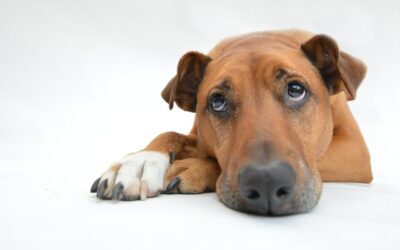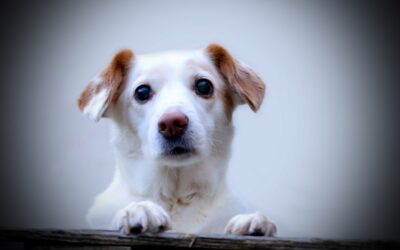Dr Elle Burton-Bradley talks us through what to look out for in your pet’s nose and when to seek help from your veterinarian.
Like everything with our pets, there is variation between individuals and the general rule is, if your dog is acting otherwise normally, there is likely no cause for concern. However, if your dog is showing any signs of illness (lethargy, reduced appetite, vomiting, diarrhoea) then it is time to speak with your veterinarian.
Read on for some nose-related symptoms that may be of concern in our pets and should be seen by your veterinarian.
Structure and Function
There is a lot of variation in the shape and size of our pets’ noses. It’s easy to forget there is a lot of anatomy behind the nostrils of our dogs and cats. In the image below you can see several of the anatomical features that are important for smell. Smells are a crucial part of communication between our pets.
When something is wrong with your pet’s nose, it’s important for our vets to examine and try to identify areas of concern.
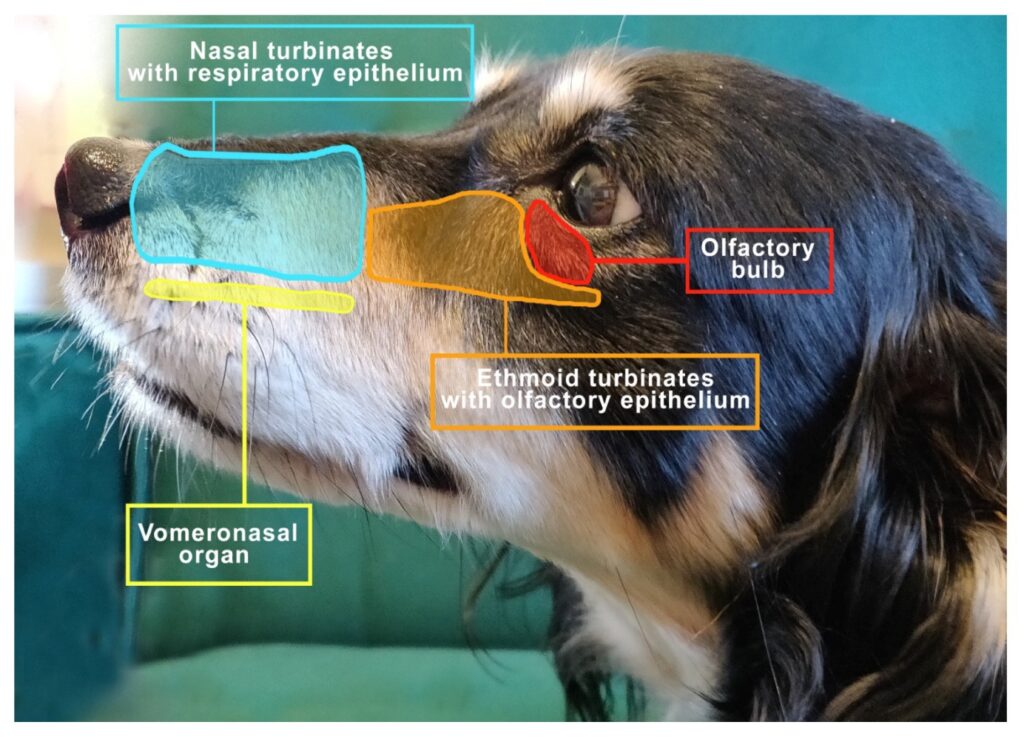
When to See Your Veterinarian
1/ Nasal Discharge
The type of discharge can help your vet identify some of the possible causes of your pet’s illness. Clear watery discharge, green mucous discharge or bloody discharge give us an indication if there is a bacterial or viral infection, a foreign body (like a grass seed), or a polyp or tumour.
Where possible, keep a note of the approximate volume and discharge colour/consistency and bring this information to your veterinary consultation.
2/ Sneezing and Reverse Sneezing
Sneezing and reverse sneezing are typical signs of nasal irritation. This could be from mites, infections, pollens, chemicals, a foreign body (like a grass seed), a polyp or mass, or even a lower respiratory tract infection (e.g. pneumonia, asthma).
While sneezing is a forceful expiratory flow of air, reverse sneezing is the opposite; forceful inspiratory air flow. Reverse sneezing has similar causes to sneezing and can also be caused by excitement or pulling on a lead.
If your pet has regular episodes of sneezing or reverse sneezing your veterinarian may recommend a nasal workup which might include blood testing, radiographs of the head and chest or a rhinoscopy (video tube to examine the back of the throat and nose). Advanced imaging, like CT or MRI scanning, may be recommended for further evaluation.
Where possible, take note of any patterns or triggers for this sneezing / reverse-sneezing. If your pet ever has difficulty breathing, bring them in to see us at The Village Vet for immediate medical attention.
3/ Dry Cracked Nose
Dry-nose conditions can be hereditary (genetic) or acquired later in life. Some conditions are benign and may require topical medications to ease symptoms and discomfort and to prevent ulceration. Infections and some cancers can cause dry or cracked noses, so it is important to get your pet examined by a veterinarian if you have concerns.
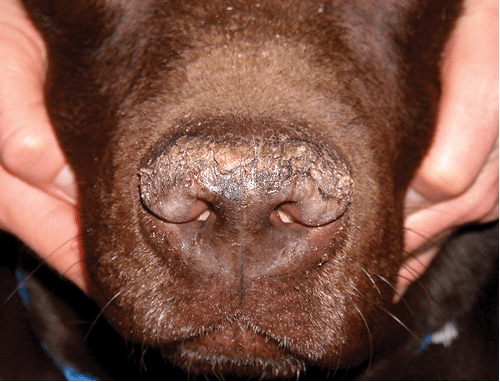
4/ Depigmented Nose
Colour change or colour loss can be an indication of an autoimmune disease or may be a natural part of ageing. If you notice a change in colour of your pet’s nose, speak to one of our veterinarians for a correct diagnosis and possible treatment options.
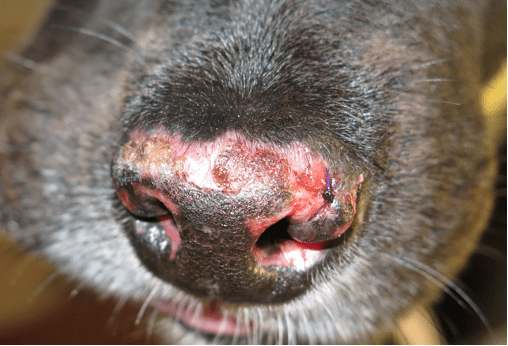
5/ Solar dermatitis (sunburn) and UV-induced cancers
Sunburn can affect our pets, particularly those with light or depigmented skin and affects noses, eyelids and tips of ears. Typically sunburn starts as red, thickened or scaly lesions but can come and go.
Some cancers or systemic illnesses can appear in a similar way, so it’s important to get your pet’s skin checked by your veterinarian.
If your pet has light coloured areas or loves to sunbake, consider using a pet-safe sunscreen!
What’s Next?
If you think your pet’s nose reactions are a response to an allergy trigger, you can read up on allergy types and symptoms here or talk to us directly at The Village Vet.
If you suspect your pet may have experienced toxicity or poisoning from plants or foods, bring your pet in to see us at The Village Vet for immediate medical check.
Book online at The Village Vet or call us directly at the Pymble Clinic on 9499 4010 or Killara Hospital on 8350 5678.
Sources
- Dr Elle Burton-Bradley BAnVetBioSci (Hons I) DVM, Veterinarian, The Village Vet
- Miller WH, Griffin CE, Campbell KL. Pigmentary abnormalities. Muller and Kirk’s Small Animal Dermatology. 7th ed. St. Louis, MO: Elsevier Mosby; 2013:618-629
- Hillier A, Lloyd DH, Weese JS, et al. Guidelines for the diagnosis and antimicrobial therapy of canine superficial bacterial folliculitis (Antimicrobial Guidelines Working Group of the International Society for Companion Animal Infectious Diseases). Vet Dermatol. 2014;25(3):163-175
- Sturgess CP, Gruffydd-Jones TJ, Harbour DA, Jones RL. Controlled study of the efficacy of clavulanic acid-potentiated amoxycillin in the treatment of Chlamydia psittaci in cats. Vet Rec. 2001;149(3):73-76
- Clinical evaluation of etretinate for the treatment of canine solar-induced squamous cell carcinoma and preneoplastic lesions. Marks SL, Song MD, Stannard AA, Power HT. J Am Acad Dermatol 27:11-16, 1992
- The light and the skin. Dunstan R, Credille KM, Walder E. In Advances in Veterinary Dermatology, vol 3—Oxford: Butterworth-Heinemann, pp 3-36

